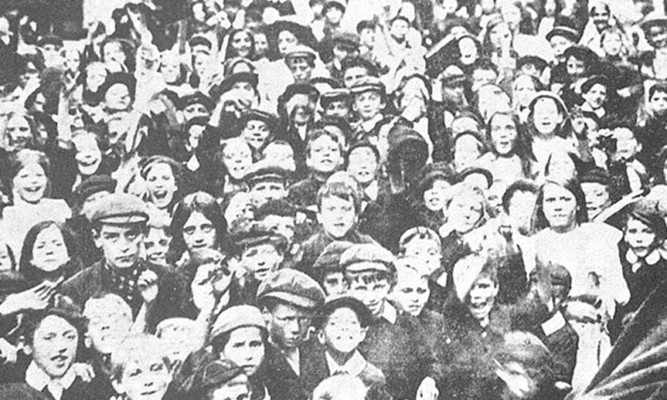A “howling mob” tore through Dundee in their thousands during a nationwide protest against corporal punishment.
Monday marked the anniversary of the terrifying 1911 rampage which saw teachers pursued through the streets and more than a dozen city schools attacked by “schoolboy strikers”.
Fresh analysis of news reports from the incident has shown pupils from Dundee and Hull took a leading role in the riots which spread across the UK like wildfire a century before the advent of social media.
Website Working Class History released pictures showing thousands of youngsters, many aged as young as nine, demanding less corporal punishment in a protest that remains the largest of its kind.
Courier reports from the time show what began with 50 senior boys refusing to go to class at the city’s Cowgate School grew into strike actions across Tayside and Fife.
The paper told of a “blaze of unrest” with pupils making “Strike for Your Rights” banners before attacking Hill Street School in the Hilltown with sticks, stones and other missiles.
They “marched” on Strathmartine Road “whooping and yelling like a band of Red Indians” to Butterburn School.
Blackness was targeted by 2,000 children, with one teacher brave enough to engage the mob forced to flee.
An attack on St Paul’s on Commercial Street caused £200 worth of damage.
Around 8pm the strikers appeared on the High Street and Nethergate before gathering on Dock Street and Crichton Street “yelling and singing and beating improvised drums”.
At the corner of Reform Street and High Street they held up traffic for a time carrying flags and placards bearing the words “Down with home lessons”.
Similar action followed in Broughty Ferry and around 50 went on strike in Tayport.
In Dunfermline, boys from Pittencrieff and Maclean went on strike as did many in Kirkcaldy and Brechin.
